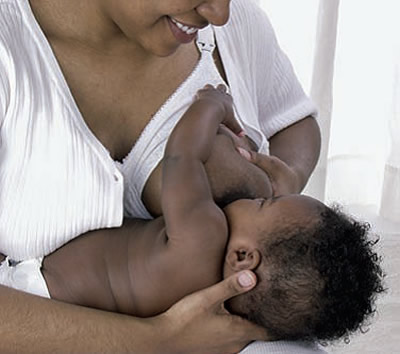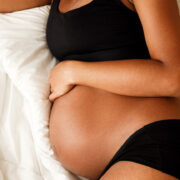Paediatrician, Dr. Ademolu Abiola Explains Why Applying Breast Milk To A Baby’s Eyes & Other Practices As Cure For Jaundice Is Dangerous

A paediatrician at the General Hospital, Ikorodu, Lagos State, Dr. Ademolu Abiola, has warned against applying breast milk to a baby’s eyes as a cure for jaundice.
The specialist, who gave the warning while speaking in an interview with PUNCH HealthWise, also warned against using pawpaw water and ampiclox for babies with the condition.
Jaundice is a yellow colouration of the skin and mucous tissues due to an increased level of bilirubin in the blood.
According to the World Health Organisation, jaundice is one of the most common physical signs observed during the neonatal period.
Dr Abiola said the majority of neonatal jaundice cases are physiological, warning that it is crucial to monitor each case to prevent complications.
“We are aware, as doctors, of a lot of practices that happen outside, especially in terms of newborn care. We know, as paediatricians, that babies sometimes have mild problems when they are born; but it’s not about babies having problems when they’re born but the management of some of those cases that matter to us.
“There are some home principles that are harmful to babies, such as when babies are being given ampiclox as a cure for jaundice.
“In some situations, some women put breast milk inside the eyes of babies. Of course, knowing the pathogenesis of jaundice, it will eventually be cleared from the body system. It has nothing to do with putting breast milk in the baby’s eyes or the use of ampiclox,”
she said.
Abiola said jaundice can be physiological (harmless) or pathological (harmful).
“Most babies have physiological jaundice, but the layman wouldn’t know the difference and that’s the more reason that when you notice the yellowness of the eyes of the baby, the baby should be taken to a good health centre for a paediatrician to evaluate the baby.
“So, using breast milk or ampiclox for the baby does not cure jaundice.
“Physiological jaundice will run its course. This means that whether you do something or not, it will fade away.
“However, you should not take chances because you don’t know if it is the physiological one or the pathological one, especially as a layman,”
she said.
She added that one can suspect pathological jaundice in the first 24 hours after birth.
“A baby born today can have jaundice and when you notice jaundice on the first day of life, it’s called pathological and normally, a baby should not even have jaundice within 24 hours, so when you notice jaundice within 24 hours, it is pathological.
“Pathological jaundice is an emergency and you have to act fast because it can lead to brain damage.
“The best management or treatment is that once you notice the yellowness of the eyes in babies, you take the baby to a paediatrician to help you evaluate him; and one of the best ways is taking the sample and sending it to the laboratory.
“The use of pawpaw water, ampiclox, and breast milk is not the treatment.
“There was a baby we admitted here, the mother had taken the baby to a private hospital where the baby was placed on antibiotics and eventually, the baby died because the infection had gone out of hand.
“The best thing to do is to take the baby to a paediatrician or a good doctor that knows about it,”
she emphasised.
WHO noted that the factors associated with an increased risk of jaundice or with an increased risk of symptomatic jaundice are acute haemolysis, pre-term, bruises and cephalohematoma, weightless, neonatal asphyxia, acidosis, hypoglycaemia, neonatal infection, hypoalbuminemia, and familiarity.
An article in The Lancet on the detection and management of jaundice stated that about 60 percent of term babies, and 80 percent of pre-term babies develop jaundice in their first week of life.
“10 percent of breastfed babies are still jaundiced at one month of age.
“Rapid differentiation between the majority of babies with jaundice who have no underlying disease (physiological jaundice) and those with pathological causes is important to detect the underlying disease and to prevent adverse sequelae such as bilirubin encephalopathy and kernicterus,”
it said.
READ ALSO: “Putting breast milk in your baby’s eye may lead to blindness” -Dr. Adesuwa Ogli
America’s National Collaborating Centre for Women’s and Children’s Health however urges health professionals not to rely on visual inspection alone to estimate the bilirubin concentration in a newborn baby with jaundice.
“Clinical examination can detect jaundice, but not the bilirubin level itself.
“The other main recommendations, based on detailed appraisal and systematic synthesis of the available evidence, include visually examining all babies for jaundice at every opportunity, especially in the first 72 hours,”
it noted.


